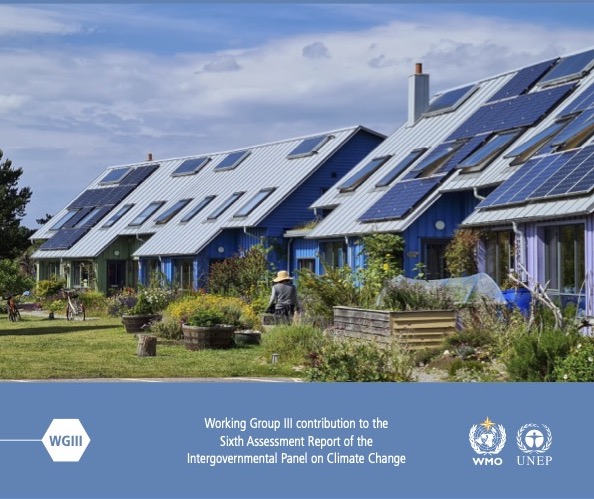IPCC AR6 WGIII Mitigation of Climate Change Reaffirms Central Role of Methane Mitigation to Keep the Climate Safe

4 April 2022— The Intergovernmental Panel on Climate Change (IPCC) just released its Sixth Assessment Working Group III on Mitigation of Climate Change, charting the narrow path left to reduce the danger of extreme weather and climate disruption and avoid the irreversible and catastrophic damage from continuing our fossil fuel addiction.
The report reaffirms the central role of mitigating methane emissions to keep the climate safe. Methane is a climate pollutant that is over 80 times more potent in causing warming than carbon dioxide over a 20-year period. The only mitigation pathways that keep 1.5 degrees Celsius warming within reach with limited overshoot require cutting methane by at least 30 percent by the end of this decade. This is the goal of the Global Methane Pledge launched by the United States and the European Union last November at COP26 and already endorsed by over 111 countries.
“If the last report from the Sixth Assessment was an atlas of human suffering and failed leadership, this report is an atlas of human hope and the last chance for the leadership we need from the heads of State to return to a safe climate,” said Durwood Zaelke, President of the Institute for Governance & Sustainable Development (IGSD) and a peer-reviewer of the report.
Zaelke added, “In this do-or-die moment, the biggest immediate opportunity we have is to cut methane emissions, which also happens to be the fastest and cheapest way to slow warming. We need to move with lightning speed to win the methane sprint to 2030, even as we’re also running the marathon to decarbonize and reach net-zero emissions by 2050.”
“We are in a climate emergency,” said Romina Picolotti, Senior Policy Analyst at IGSD, noting that“heads of State must act in emergency mode to take the helm and steer humankind to safety.” Picolotti added, “Right now we are walking towards a cliff and we are accelerating our pace, and once we jump there is no way back. We have the technologies, we know the science, now is the time for high political will and finance to deploy the solutions at scale. We can and must reduce 45% of methane by 2030 according to 2020 levels.”
“We need to keep hold of the 1.5 degrees Celsius guardrail. Overshoot is a death sentence for vulnerable people and ecosystems that can’t come back if pushed too far or too fast. Cutting methane is the only mitigation strategy we know that can slow warming fast enough to shave the overshoot,” said Dr. Gabrielle Dreyfus, Chief Scientist at IGSD and a peer-reviewer of the report.
Adequately responding to the climate emergency requires moving beyond voluntary measures and taking actions consistent with the following key principles:
Keep hold of the 1.5°C guardrail — overshoot is a death sentence for vulnerable communities
Every fraction of a degree of warming will increase the losses and damages impacting human and natural systems. Climate disruption is already affecting millions of people, with over 3 billion living in vulnerable places. We are perilously close to crossing temperature thresholds between 1.5 and 2°C with potentially abrupt and irreversible impacts on Arctic permafrost, the Greenland and West Antarctic ice sheets, and threatened and unique ecosystems.
Win the sprint to 2030 during this, the decisive decade
The 1.5°C guardrail is likely to be breached by the 2030s. The WGII report issued last month emphasized the urgency of slowing warming and limiting overshoot of 1.5°C, a guardrail once considered relatively safe guardrail. The extent and duration of an overshoot risks setting off more self-reinforcing feedbacks and crossing more tipping points that cause irreversible damage.
Use two parallel strategies to slow warming in the near term by cutting methane and other non-CO2 climate pollutants, and to limit warming in the long term by cutting CO2
The only way to shave the overshoot peak is to pursue parallel strategies that pair deep cuts in carbon dioxide emissions by rapidly shifting to clean energy with fast and deep cuts in methane and other short-lived climate pollutants. Achieving net-zero carbon dioxide is essential to limiting warming in the long term while cutting methane is the only mitigation strategy that can slow warming in the next twenty years.
These parallel strategies are complementary and reinforcing and should not be traded off. Cutting more CO2 now has a limited impact on the rate of warming over the next two decades because CO2 has a long lifetime and because reducing CO2 emissions from most fossil fuel sources also reduces the cooling that comes from the reflective aerosol particles that are co-emitted with fossil fuel burning. Conversely, reducing methane emissions alone has a limited effect on warming in the long term.
Only by adopting parallel strategies that value both keeping the 1.5°C guardrail within reach in the near term and staying well below 2°C through the end of this century can we chart a course for a livable planet.
Background on Sixth Assessment: The IPCC Sixth Assessment Report cycle, which began in 2015, just released the contribution from Working Group III on Mitigation of Climate Change. This follows the contribution from Working Group I Climate Change 2021: The Physical Science Basis in August 2021 and Working Group II Climate Change 2022: Impacts, Adaptation, and Vulnerability in February 2022. Government delegates and report authors have been meeting online to accept the underlying technical assessment report and finalize a summary for policymakers. A synthesis report will be the last of the AR6 products and is scheduled to be published in September 2022, completing the Sixth Assessment Report.
